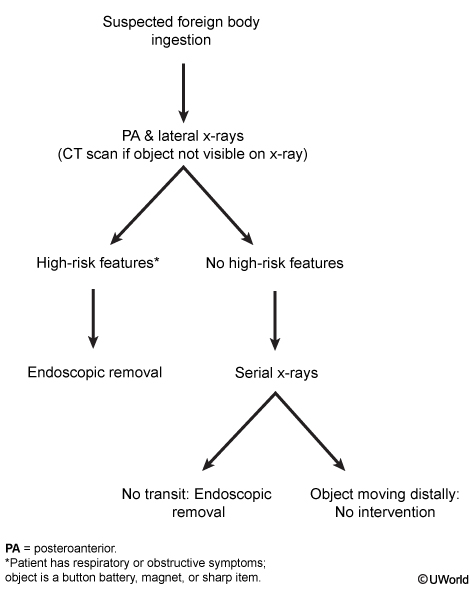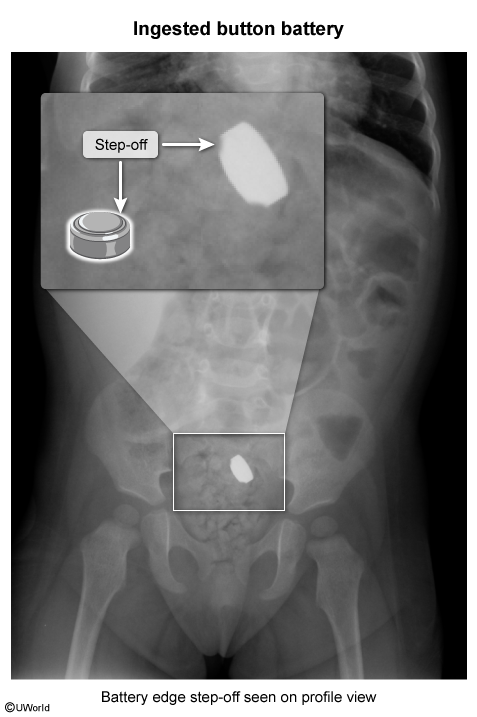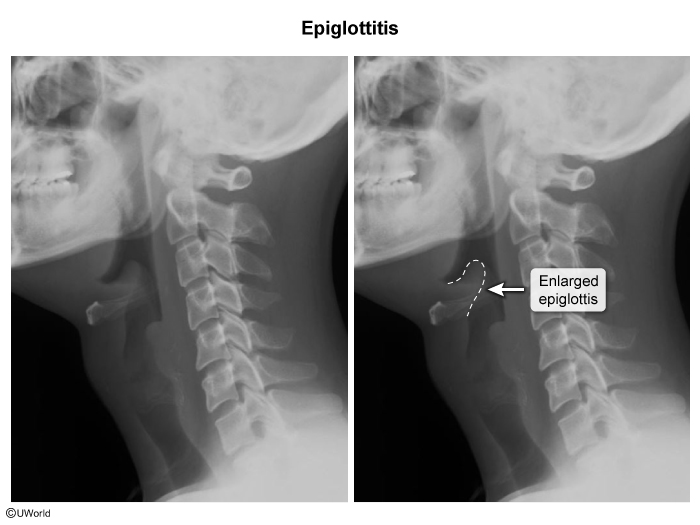Foreign Body Ingestion
Article Sections
Introduction
Foreign body ingestion is a common clinical scenario that varies in presentation and management between children and adults. In children, accidental ingestion predominates, often involving small objects such as coins, toys, or batteries. In adults, intentional ingestion is more frequent, typically in the setting of psychiatric disorders, developmental delay, or intoxication. Management depends on the foreign body's location, type, and the presence of certain high-risk features that predispose complications and may require endoscopic or surgical intervention.
Pathophysiology and risk factors
The gastrointestinal tract can safely pass many foreign bodies due to its large diameter and muscular propulsion. Many objects pass with minimal complications; however, certain narrow sections can result in lodging of a foreign body (eg, cricopharyngeal region, pylorus, ileocecal valve) and pressure necrosis (as the object remains pressed against the tissues). Prolonged pressure can cause perforation and its subsequent complications (eg, mediastinitis, peritonitis).
Continue Learning with UWorld
Get the full Foreign Body Ingestion article plus rich visuals, real-world cases, and in-depth insights from medical experts, all available through the UWorld Medical Library.
Figures

Images



